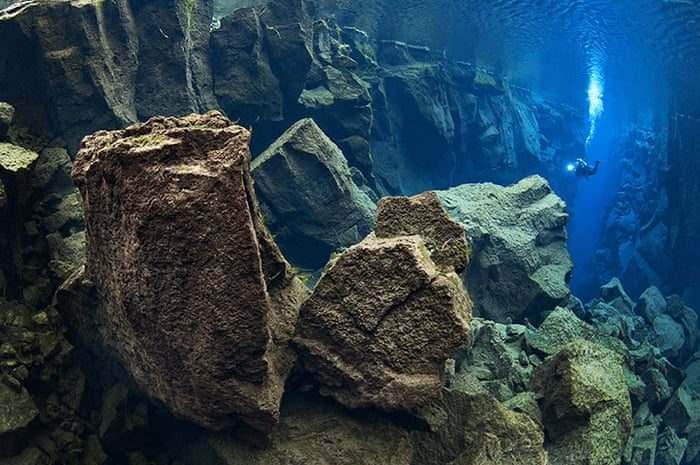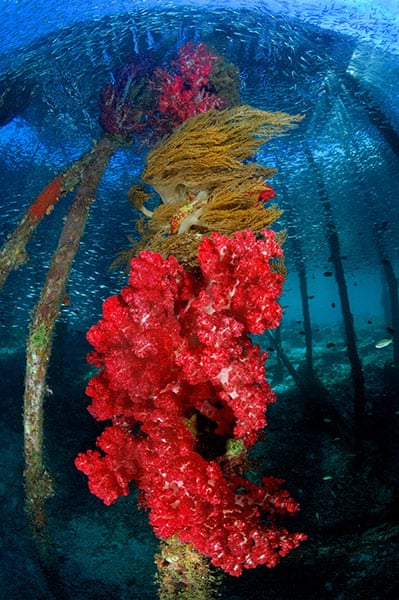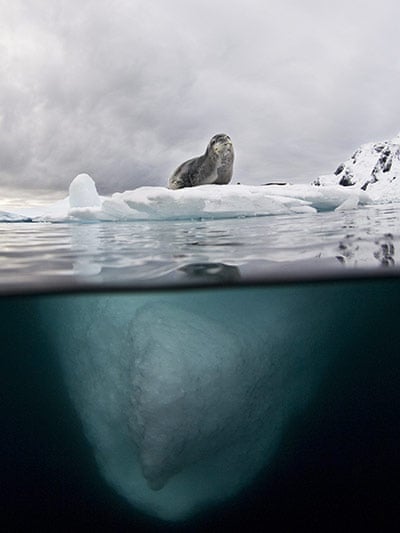So our group has switched again and we have been asked to develop a “look” (tonal scenes and depictions of environments in black and white) for a world to fit characters designed by a previous group. We were given the world which combines a raindrop with a Dyson sphere – the world is a water based structure built around a “sun” which we have decided is a dying star. The heat source for this world is internal, and it is a world that is permanently lit and constant in it’s seasons because it does not rotate around a light/heat source like Earth would.
Therefore, the planet structure compared to Earth is reversed, the inhabitants live on the external sections of the planet, closest to the atmosphere and farthest from the heat source. In this habitable zone we have brainstormed ice based structures, aquatic plants turned full ecosystem and air bubbles that house floating rocks and provide the amphibious inhabitants with pockets of air. We have to build our planet around the “mechanical ecosystem” left in the previous character designs; we have explained this with the planet suffering frequent meteor showers, and in these meteors there is the presence of alien metals.

Currently I am gaining inspiration from looking at underwater photography. Above is a “Continental Trench” in Iceland, taken by photographer Magnus Lundgren – I am picturing structures housing the underwater ecosystem, built from ice and crystalline formations. The coral formation to the bottom left in “Women Profile” by Adriano Morettin is a reference for perhaps a seaweed or coral based ‘jungle’ we could design.. The bottom right photograph shows how the atmosphere (which from an outside perspective is made up on glacial peaks and expanses of water) works with the world. It is Jonas Hormer’s “Leopard on Ice.”


 To the left and centre are images of crashed Allied aircrafts from World War II (images from the Daily Mail) and how they had become embedded in the sea itself, and how the ecosystems are forming over them. We have already played with ideas of alien metals crashing into the world, it is another concept that could be worked with that remnants of other civilisations are present in the setting of our world.
To the left and centre are images of crashed Allied aircrafts from World War II (images from the Daily Mail) and how they had become embedded in the sea itself, and how the ecosystems are forming over them. We have already played with ideas of alien metals crashing into the world, it is another concept that could be worked with that remnants of other civilisations are present in the setting of our world.

I began painting scenes in frames to try and piece my ideas together. My underwater settings focus heavily on ice/rock formations, and I want to create some more based on organic plant life, the civilisation/habitat and the mechanical elements of the world. I like the grandiose undersea structures, as gravitational pressure lowers underwater the possibility of great swooping rock formations is made more believable. We have brainstormed as a group that these rock formations have been introduced to the world due to it’s high likelihood of meteor showers.
Here is the selection of scenes, painted with ink. For my next series I hope to use my gray pro markers to experiment with media;

I’m also looking at work from environmental concept artists in order to develop more of an understanding of how other artists tackle representing these fantastical elements. The pieces below are from Jakub Rozalski, a concept artist and illustrator, who draws a reimagining of post-revolution Communist Russia only with the presence of gigantic mechas. His style of painting is beautiful and the concepts behind the drawings are so fascinating. I’m using these as a reference for how we’re going to add the “mechanical ecosystem” to our world…


This artwork from freelance concept artist Dmitry Vishnevsky below is similar to how I imagine our world as a whole interacts with meteor showers and the galaxy around it. Because it is water based the surface is delicate compared to Earth.

And finally, below is a scene from fourth Pirates of the Caribbean film, which depicts the lost “Fountain of Youth” – I want to try something vine and similar for our plant based environments…we can work with seaweed and create interesting plant based settings out of underwater flora. All the possibilities!








 To the left and centre are images of crashed Allied aircrafts from World War II (images from the Daily Mail) and how they had become embedded in the sea itself, and how the ecosystems are forming over them. We have already played with ideas of alien metals crashing into the world, it is another concept that could be worked with that remnants of other civilisations are present in the setting of our world.
To the left and centre are images of crashed Allied aircrafts from World War II (images from the Daily Mail) and how they had become embedded in the sea itself, and how the ecosystems are forming over them. We have already played with ideas of alien metals crashing into the world, it is another concept that could be worked with that remnants of other civilisations are present in the setting of our world.




